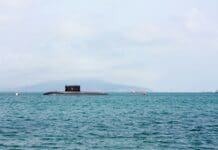This post is also available in:
 עברית (Hebrew)
עברית (Hebrew)
A U.S. research team has launched a new effort to solve one of the most significant technical challenges facing next-generation rocket propulsion: developing materials that can survive the extreme environment inside rotating detonation engines (RDEs). The initiative is backed by a $2 million grant from the U.S. National Science Foundation (NSF), awarded through its flagship Designing Materials to Revolutionize and Engineer our Future (DMREF) program.
RDEs are an emerging propulsion concept that uses continuous detonation waves—rather than conventional combustion—to generate thrust. These engines operate by sustaining a high-speed, ring-shaped shockwave inside a circular combustion chamber. The result is a propulsion system that offers higher fuel efficiency, compact size, and reduced emissions compared to today’s rocket and jet engines.
While the potential benefits are considerable, progress has been slowed by a major obstacle: existing engine materials are unable to withstand the intense thermomechanical conditions created by the rotating detonation wave. Tests have shown that conventional metal components often fail after only a few operational cycles.
To address this, the research team—led by engineers at Lehigh University in collaboration with Carnegie Mellon University and the University of California, Irvine—plans to develop new high-performance copper-based alloys specifically designed for use in RDE components, according to the press release.
Their approach integrates physical testing, advanced computer modeling, and AI-guided materials design. A central part of the project involves creating a small-scale RDE test platform to evaluate material performance under realistic high-frequency thermal and mechanical loading. The team will also produce maps showing how different alloy compositions respond to extreme cyclic stresses, offering critical insights for designing future propulsion systems.
In addition to aerospace propulsion, the findings may have broader implications for materials used in other high-demand environments, such as power generation.
If successful, the work could help unlock more efficient and cost-effective access to space, contributing to services such as satellite deployment, navigation, and communications.


























